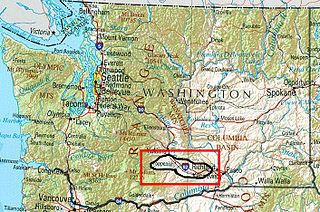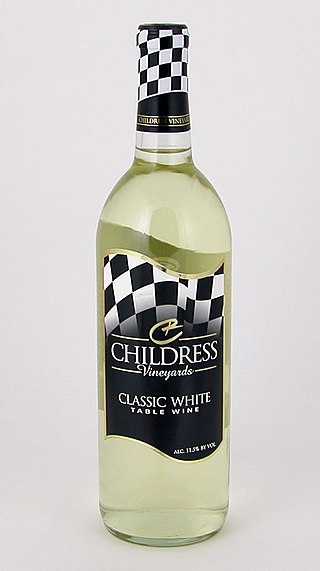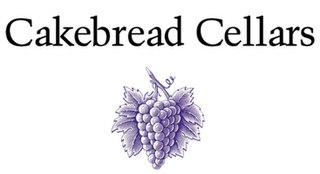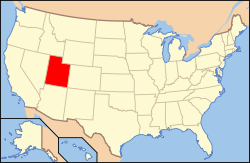
Chile has a long history in the production of wine, with roots dating back to the 16th century when the Spanish conquistadors introduced Vitis vinifera vines to the region. In the mid-19th century, French wine varieties such as Cabernet Sauvignon, Merlot, Carmenère, and Franc were introduced. During the early 1980s, the Chilean wine industry underwent a renaissance with the introduction of stainless steel fermentation tanks and the use of oak barrels for aging. This led to a rapid growth in exports as quality wine production increased. The number of wineries in Chile rose from 12 in 1995 to over 70 in 2005.

New Zealand wine is produced in several of its distinct winegrowing regions. As an island country in the South Pacific Ocean, New Zealand has a largely maritime climate, although its elongated geography produces considerable regional variation from north to south. Like many other New World wines, New Zealand wine is usually produced and labelled as single varietal wines, or if blended, winemakers list the varietal components on the label. New Zealand is best known for its Marlborough Sauvignon Blanc, and more recently its dense, concentrated Pinot Noir from Marlborough, Martinborough and Central Otago.
South African wine has a history dating back to 1659 with the first bottle being produced in Cape Town by its founder and governor Jan van Riebeeck. Access to international markets led to new investment in the South African wine market. Production is concentrated around Cape Town and almost exclusively located within the Western Cape province, with major vineyard and production centres at Constantia, Paarl, Stellenbosch and Worcester.
The state of Oregon in the United States has established an international reputation for its production of wine, ranking fourth in the country behind California, Washington, and New York. Oregon has several different growing regions within the state's borders that are well-suited to the cultivation of grapes; additional regions straddle the border between Oregon and the states of Washington and Idaho. Wine making dates back to pioneer times in the 1840s, with commercial production beginning in the 1960s.

The Yakima Valley AVA was the first American Viticultural Area established within Washington state, gaining the recognition in 1983. Part of the larger Columbia Valley AVA, Yakima Valley AVA is home to more than 18,000 acres (73 km2) of vineyards, giving the area the largest concentration of wineries and vineyards in the state. The most widely planted varietals in the area are Chardonnay, Riesling, Merlot, Cabernet Sauvignon, Pinot gris, and Syrah. Nearly 40% of Washington state yearly wine production is made from Yakima Valley grapes. In addition to grapes, the Yakima Valley is also home to several fruit orchards growing apples, cherries, nectarines, peaches, pears and plums. Around the town of Zillah, there is the Zillah Fruit Loop driving tour through the area's orchards and vineyards. The area is also home to nearly 80% of the US hop production.

The Walla Walla Valley AVA is an American Viticultural Area located within Washington state and extending partly into the northeastern corner of Oregon. The wine region is entirely included within the larger Columbia Valley AVA. In addition to grapes, the area produces sweet onions, wheat and strawberries. After the Yakima Valley AVA, the Walla Walla AVA has the second highest concentration of vineyards and wineries in Washington State. Walla Walla hosts about 140 wineries.

Childress Vineyards is a winery in Lexington, North Carolina owned by NASCAR Cup Series championship team owner Richard Childress. The connection between NASCAR and fine wine is reflected in the labeling of some of the wines produced by Childress, featuring a checkered flag motif.

Colorado wine refers to wine made from grapes grown in the U.S. state of Colorado. Most of Colorado's vineyards are located on the western slope of the Rocky Mountains, though an increasing number of wineries are located along the Front Range.

California wine production has a rich viticulture history since 1680 when Spanish Jesuit missionaries planted Vitis vinifera vines native to the Mediterranean region in their established missions to produce wine for religious services. In the 1770s, Spanish missionaries continued the practice under the direction of the Father Junípero Serra who planted California's first vineyard at Mission San Juan Capistrano.

Friuli-Venezia Giulia wine is wine made in the northeastern Italian region of Friuli-Venezia Giulia. There are 11 denominazione di origine controllata (DOC) and 3 denominazione di origine controllata e garantita (DOCG) in the Friuli-Venezia Giulia area. The region has 3 indicazione geografica tipica (IGT) designations Alto Livenza, delle Venezie and Venezia Giulia. Nearly 62% of the wine produced in the region falls under a DOC designation. The area is known predominantly for its white wines, which are considered some of the best examples of Italian wine in that style. Along with the Veneto and Trentino-Alto Adige, the Friuli-Venezia Giulia forms the Tre Venezie wine region, which ranks with Tuscany and Piedmont as Italy's world class wine regions.

New South Wales wine is Australian wine produced in New South Wales, Australia. New South Wales is Australia's most populous state and its wine consumption far outpaces the region's wine production. The Hunter Valley, located 130 km (81 mi) north of Sydney, is the most well-known wine region but the majority of the state's production takes place in the Big Rivers zone-Perricoota, Riverina and along the Darling and Murray Rivers. The wines produced from the Big Rivers zone are largely used in box wine and mass-produced wine brands such as Yellow Tail. A large variety of grapes are grown in New South Wales, including Cabernet Sauvignon, Chardonnay, Shiraz and Sémillon.
Smith-Madrone Vineyards and Winery is a winery in Napa Valley in the Spring Mountain District AVA. It was founded in 1971 by Stuart Smith. The name Smith-Madrone comes from combining the founders' name with the madrone trees among the estate. The winery is a long-time pioneer of dry farming.
Foris Vineyards Winery is an American winery located near Cave Junction, Oregon in the Illinois Valley region of the Rogue Valley AVA of Southern Oregon. As one of Oregon's pioneering grape growers, Ted Gerber planted his first vineyard in 1974. For 15 years, Gerber provided fruit to other winemakers, until 1986 when the winery was founded by Ted and Meri Gerber and the Foris label was launched.

Champoux Vineyard is a grape growing estate located in the Horse Heaven Hills AVA of Washington state. Grapes grown in the vineyard have been used to produce some of the most critically acclaimed Washington wines with the name Champoux regularly being featured on vineyard designated wines. Paul Gregutt, wine writer for the Seattle Times and Wine Enthusiast, list Champoux as one of the "top ten" vineyards in the entire state. Cabernet Sauvignon grapes from Champoux vineyards were featured in the consecutive 100 point Robert Parker rated wines from Quilceda Creek Vintners for the 2002 and 2003 vintages.
Cono Sur Vineyards & Winery is a subsidiary of Concha y Toro Winery and is the third largest exporter of bottled wine in Chile. Established in 1993, its name is a reference to its location in the Southern Cone of South America and a play on the word connoisseur. In 2015, it was the official wine of the Tour de France.

Boushey Vineyard is a grape-growing estate located in the Yakima Valley AVA, north of Grandview, Washington. Grapes grown in the vineyard have been used to produce some of the most critically acclaimed Washington wines with the name Boushey regularly being featured on vineyard designated wines. Paul Gregutt, wine writer for the Seattle Times and Wine Enthusiast, list Boushey as one of the "top ten" vineyards in the entire state. The vineyard is owned and managed by viticulturist Dick Boushey who was honored in 2002 by the Washington State Wine Commission as Washington's "Grower of the Year" and in 2007 by Wine & Spirits as their "Grower of the Year". After Red Willow Vineyard, which was planted with David Lake and Mike Sauer, Boushey was one of the first Washington wine growers to plant Syrah. Today, Boushey Vineyard is considered by wine experts such as Jon Bonné to be "One of the state's top Syrah spots" with many Washington Syrahs made from Boushey's grape receiving critical acclaim.

Red Willow Vineyard is a grape-growing estate located in the far western end of Yakima Valley AVA, within the Yakama Indian Reservation. Beginning with their relationship with Columbia Winery and Master of Wine David Lake, grapes from Red Willow have been used to produce some of the most critically acclaimed Washington wines with the vineyard's name regularly being featured on vineyard designated wines. Paul Gregutt, wine writer for the Seattle Times and Wine Enthusiast, list Red Willow as one of the "top ten" vineyards in the entire state.

Daniel Baron is an American winemaker. He is best known for his work with the Duncan family-owned Silver Oak Cellars and Twomey Cellars, and was Director of Winemaking for both. After his retirement in 2017, he launched Complant Wine with his son, Sam Baron, to produce small production, artisanal, single vineyard wines. Originally a field worker for John Rolleri at Chateau Montelena, he gained experience in the Bordeaux region of France and was mentored by the likes of grape geneticist Professor Harold Olmo, and winemakers Jean-Claude Berrouet and Justin Meyer. He became general manager of Christian Moueix's Dominus Estate in the 1980s. He became winemaker for Silver Oak, an exclusive Cabernet Sauvignon producer, in 1994, and was trained by Justin Meyer to follow in his footsteps as Silver Oak's winemaker before Meyer’s retirement in 2001. In 1999, Baron was instrumental in persuading the Duncans to establish Twomey to pursue Merlot, Pinot noir, and Sauvignon blanc after discovering high quality Merlot grapes on Silver Oak’s Soda Canyon Ranch Vineyard. He has served on boards such as the American Society of Enology and Viticulture and the Napa Valley Wine Technical Group.

Cakebread Cellars is a Napa Valley winery known for its Chardonnay and Sauvignon Blanc wines, which are internationally distributed. Founded in 1973 by Jack and Dolores Cakebread in Rutherford, California, the winery produces approximately 200,000 cases of wine per year.

Kenwood Vineyards is a winery in Kenwood, California, located on Highway 12 in the Sonoma Valley wine country. It is currently owned by Pernod Ricard Winemakers.

















